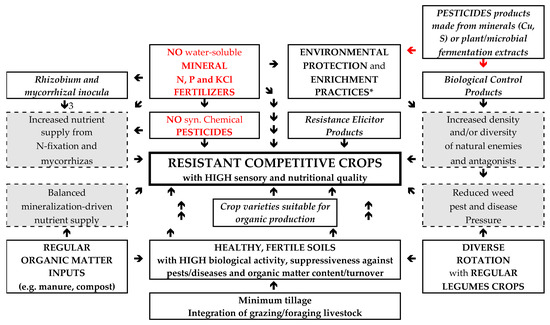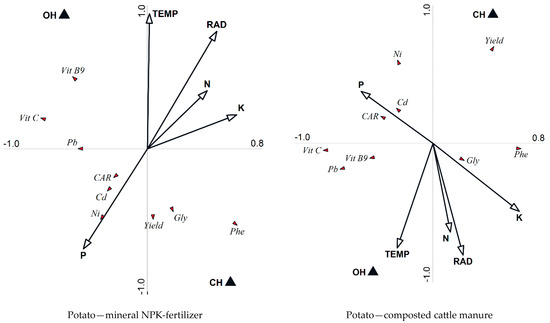Innovative Organic and Regenerative Agricultural Production
A topical collection in Agronomy (ISSN 2073-4395). This collection belongs to the section "Innovative Cropping Systems".
Viewed by 13401Editors
2. Department of Nutrition, Institute of Basic Medical Sciences (IMB), University of Oslo, 0372 Oslo, Norway
3. Livadopa Farm, Sivas Festos, 70200 Crete, Greece
Interests: soil management; crop protection; crop breeding for low-input systems; ‘low-input’ and organic agricultural systems development; nutritional quality of organic and low-input dairy production systems; resource use efficiency; food quality and safety assurance; food processing technology; nutritional control of gastrointestinal diseases in monogastric farm animals (pigs/poultry)
Special Issues, Collections and Topics in MDPI journals
Interests: soil management; crop protection; environmental impact assessments; biodiversity in agroecosystems; energy and input use in agroecosystems; green infrastructure in agroecosystems; ‘low-input’ and organic agricultural systems development; oliviculture; Mediterranean fruit tree crops; tropical and subtropical fruit trees; agroecology
Interests: sustainable crop production; agronomic management for sustainable food production systems; organic production systems; improvement of nutrient use efficiency of food crops; improvement of nutritional quality of food crops; improve genetic diversity of crop species—use of novel, underutilised and traditional crop species/genotypes
Topical Collection Information
Dear Colleagues,
Over the last 50 years, global agricultural food production has become increasingly dependent on the use of non-renewable and/or scarce resources, particularly the fossil fuel required to produce mineral N-fertilizer and pesticides, mined minerals used as P and K fertilizer, and water used for irrigation. The cost of these inputs has increased more rapidly than farm gate prices, and this is thought to have a negative impact on farm incomes, crop yields, and food security.
There is also increasing evidence and concern that the increased use of agrochemical inputs has had a negative impact on soil and crop health, the nutritional quality of foods, biodiversity, resource use efficiency, and the overall carbon footprint of food production, related to climate change.
The principles and standards of organic and regenerative agriculture prohibit or limit the use of synthetic chemical N, P, and KCl fertilizers and pesticides, because these inputs are thought to have negative side effects on soils, water resources, crops and human health, biodiversity, and the environment.
Instead, the logical framework for integrated soil, crop, and human nutrition and health management is based on (a) the use of resistant and weed-competitive varieties; (b) botanically diverse rotations that include N-fixing legume crops; (c) regular inputs of animal manure and/or organic-waste-based composts; (d) the conservation and establishment of areas (green infrastructure) of biodiversity on farms; (e) minimum tillage and soil cover, especially in perennial crops; and (f) the integration of crop and outdoor grazing/foraging-based livestock production systems.
This Topical Collection aims to support the publication and access to information on Innovative Organic and Regenerative Agricultural Production Systems, including results from studies aimed at:
- Researching and comparing/contrasting soil, crop and farm management practices/systems;
- Developing methods/strategies to (a) improve soil health, crop yields, yield stability, resource use efficiency, biodiversity, food quality and safety; and (b) minimize negative environmental impacts, particularly greenhouse gas emissions and carbon footprints of crop production.
Prof. Dr. Carlo Leifert
Dr. Emmanouil Kabourakis
Dr. Leonidas Rempelos
Collection Editors
Manuscript Submission Information
Manuscripts should be submitted online at www.mdpi.com by registering and logging in to this website. Once you are registered, click here to go to the submission form. Manuscripts can be submitted until the deadline. All submissions that pass pre-check are peer-reviewed. Accepted papers will be published continuously in the journal (as soon as accepted) and will be listed together on the collection website. Research articles, review articles as well as short communications are invited. For planned papers, a title and short abstract (about 100 words) can be sent to the Editorial Office for announcement on this website.
Submitted manuscripts should not have been published previously, nor be under consideration for publication elsewhere (except conference proceedings papers). All manuscripts are thoroughly refereed through a single-blind peer-review process. A guide for authors and other relevant information for submission of manuscripts is available on the Instructions for Authors page. Agronomy is an international peer-reviewed open access monthly journal published by MDPI.
Please visit the Instructions for Authors page before submitting a manuscript. The Article Processing Charge (APC) for publication in this open access journal is 2600 CHF (Swiss Francs). Submitted papers should be well formatted and use good English. Authors may use MDPI's English editing service prior to publication or during author revisions.
Keywords
- organic farming
- soil health
- regenerative farming practices
- integrated crop management
- crop nutrition
- carbon footprints
- greenhouse gas emissions
- human health
- resource use efficiency
- food security
2024
Jump to: 2023
2023
Jump to: 2024
Planned Papers
The below list represents only planned manuscripts. Some of these manuscripts have not been received by the Editorial Office yet. Papers submitted to MDPI journals are subject to peer-review.
- Effects of Rhizobium inoculation on grain legume performance; results of a systematic literature review and meta-analysis
- Effect of climatic conditions, crop protection and fertilisation on yield and disease severity of faba bean (Vicia faba L.); results from the long-term NFSC-trials.
- Effect of Rhizobium seed inoculant and micronutrient fertiliser applications on plant growth, yield and quality parameters of chickpea; results from a 2-year pilot study in Crete
- Effect of climatic conditions, variety, pre-crop, crop protection and fertilization on disease severity, yields and nutritional quality parameters in potato crops; results from the long-term NFSC trials.
- Pesticide residues and antioxidants concentration in organic and conventional grape and grape products; results of a systematic literature review and meta-analysis
- Effects variety, organic fertilizer type and irrigation on potato yield and disease severity in organic production systems; results from field experiments in two contrasting sites in Greece
- Effect of organic and conventional cereal production methods on Fusarium head blight and mycotoxins contamination levels











